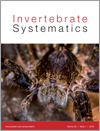
Invertebrate Systematics
Volume 32 Number 1 2018
IS17035Cosmopolitan polychaetes – fact or fiction? Personal and historical perspectives
Until the 1980s ‘cosmopolitan’ species were considered common among polychaetes. We examine how this idea originated and argue that while wide distributions are possible in the deep sea and as a result of bioinvasions, they are rare. We suggest the measures needed to revolve the status of reportedly cosmopolitan species and stress the value of museum vouchers associated with DNA sequences.
IS16071Taxonomic revision and insights into the speciation mode of the spider Dysdera erythrina species-complex (Araneae : Dysderidae): sibling species with sympatric distributions
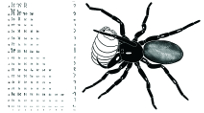
Sibling species provide insights into the mechanisms involved in speciation. Here, we integrate information from morphology and molecular and chromosome markers to discover and delimit twenty sibling species within the woodlouse hunter spider Dysdera erythrina complex. Our results suggest that the combination of rapid chromosome differentiation and the dietary specialisation stands behind the origin of this remarkable, and so far mostly overlooked, diversity.
IS17028Molecular phylogeny of branchiobdellidans (Annelida : Clitellata) and their host–epibiont association with Austropotamobius freshwater crayfish
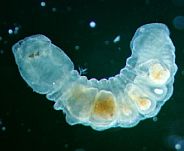
Branchiobdellidans are ectosymbiotic annelids associated with freshwater crayfish. Here, we inferred, using mtDNA COI sequences, the phylogenetic relationships of branchiobdellidans from the genus Branchiobdella living on the Austropotamobius crayfish, from Dinaric and Alpine regions of Europe. High intraspecific p-distance values were observed, indicating the existence of cryptic taxa within genus Branchiobdella, while congruent phylogenetic patterns within Austropotamobius and branchiobdellidans indicate similar evolutionary histories and imply their coevolution. Photograph: Branchiobdella parasite, by G. Klobučar.
IS17003Exploring the diversity of Asian Cryptocercus (Blattodea : Cryptocercidae): species delimitation based on chromosome numbers, morphology and molecular analysis
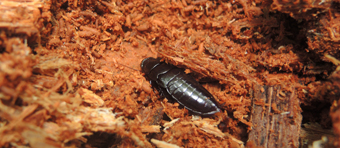
This study is the first attempt to delimit Cryptocercus species on a large scale, including different species delimitation analysis methods. We aim to find the unrecognized diversity of Cryptocercus in the Hengduan Mountains, then we combined our data with biogeography to interpret the rich diversity of Cryptocercus in China. Our results have shed new light on the diversity of Cryptocercus.
IS17038Further polyphyly of pinnotheroid crabs: the molecular phylogenetic position of the polychaete-associated Aphanodactylidae
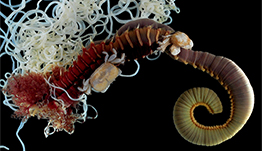
Pea crabs, Pinnotheroidea, being highly specialised to live symbiotically (obligate commensalism) with other marine invertebrates, were long thought to have a common ancestor. Our molecular analysis shows that the lineage symbiotic with medusa worms, Aphanodactylidae, evolved independently of other pea crabs and is more closely related to the free-living ghost and sentinel crabs. This indicates that obligate commensalism has evolved independently at least three times within the crabs.
IS17021The zoogeography of extant rhabdopleurid hemichordates (Pterobranchia : Graptolithina), with a new species from the Mediterranean Sea
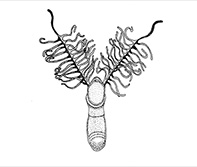
Rhabdopleura is a colonial, tubicolous animal with a near half billion-year old fossil record. Here we use morphology and molecules to describe a fifth living species, named R. recondita, that inhabits dead bryozoan skeletons. The habitat of rhabdopleurids, the ability to form buds from cells protected inside of the tubes, and clonal reproduction may have contributed to Rhabdopleura’s longevity.
IS17022Systematics and biogeography of Spinoctenus, a new genus of wandering spider from Colombia (Ctenidae)
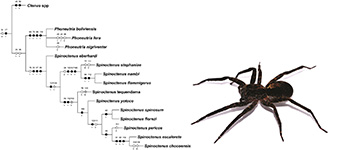
Ctenidae is well represented in the Neotropics by small to large wandering spiders that usually inhabit the ground of forests and understory vegetation. A new genus of Ctenidae, including eleven new species, is described and analyzed in a morphological phylogeny to test the monophyly of the genus and relationships with the remaining ctenid genera. In addition, we present a historical biogeographical analysis of this genus based on the phylogenetic relationships of the species.
IS17052Morphological and mitochondrial DNA data reshuffle the taxonomy of the genera Atopochetus Attems, Litostrophus Chamberlin and Tonkinbolus Verhoeff (Diplopoda: Spirobolida: Pachybolidae), with descriptions of nine new species
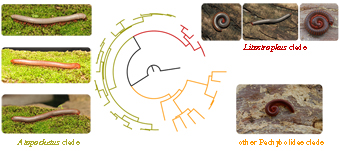
This paper reports on the very first mitochondrial DNA sequence analysis of SE Asian pachybolid millipedes. Combined with morphological data, these mtDNA sequences show that the well-known genus Tonkinbolus should be synonymized with the genus Litostrophus, while most former Tonkinbolus species should be transferrred to the re-instated genus Atopochetus. The data also uncover nine new species.
IS17040Systematics and phylogeography of the Australasian mangrove crabs Parasesarma semperi and P. longicristatum (Decapoda : Brachyura : Sesarmidae) based on morphological and molecular data
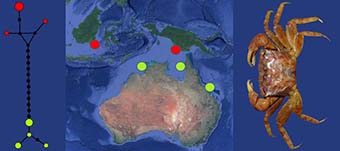
Molecular approach has improved taxonomic status of many complex taxa and addressed their phylogeographic structures. Aiming to evaluate taxonomic validity of the two sister Australasian mangroves species, our genetic analyses confirm the existence of two distinct phylogeographic lineages. The data indicate distinct separation between Australian clade and the Southeast Asian group.
IS17034Molecular phylogeny of the crab genus Metopograpsus H. Milne Edwards, 1853 (Decapoda : Brachyura : Grapsidae) reveals high intraspecific genetic variation and distinct evolutionarily significant units
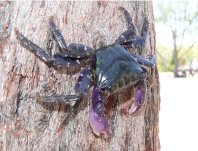
The extant six species of Indo-Pacific crabs belonging to the genus Metopograpsus show high inter-population morphological variability and low interspecific differences. We performed a molecular investigation based on data coming from the whole distributional ranges of each species, aimed at clarifying their phylogenetic and taxonomic status. We recorded a high intra-specific genetic variation within two Metopograpsus species, suggesting the occurrence of new undescribed species.
IS17011Phylogenetic relationships and evolution of reproductive modes within flattened syllids (Annelida : Syllidae) with the description of a new genus and six new species
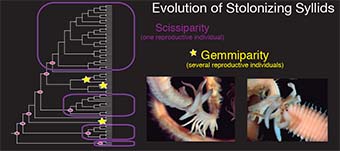
Syllids use a remarkable mode of reproduction with either one (scissiparity) or several (gemmiparity) stolons, with profound evolutionary and ecological implications. Our goal was to provide a solid phylogenetic backbone to assess the ancestral reproductive character of the group, which resulted in scissiparity as the ancestral and gemmiparity as the derived condition. The independent acquisition of gemmiparity by two different clades suggests this is an advantageous labile feature but without a clear phylogenetic signal.



